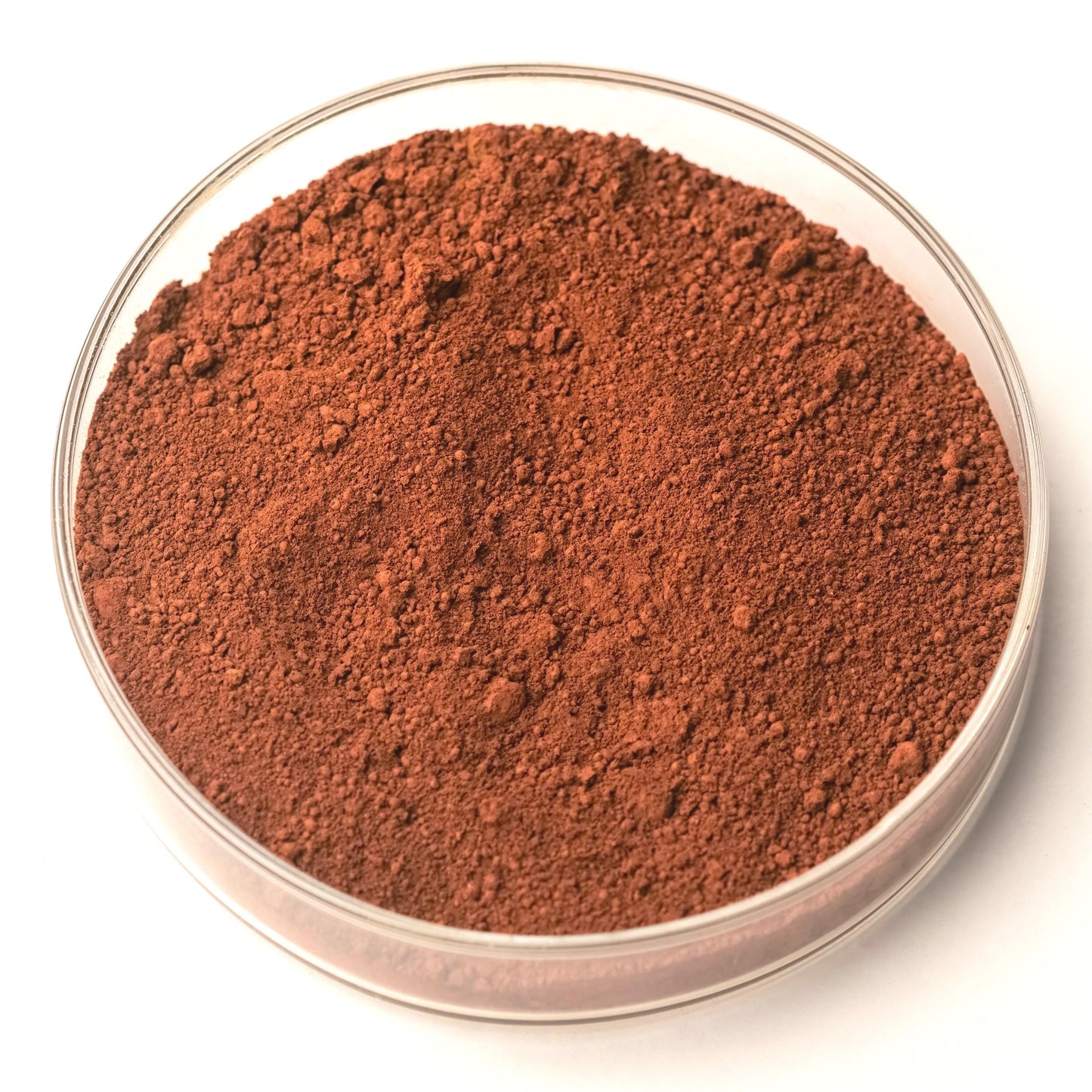Crocus Martis
Crocus Martis
Couldn't load pickup availability
Share

Description
Crocus Martis is a historic iron-oxide based pigment created by roasting green vitriol (ferrous sulfate) until it decomposes into red ferric oxide. The resulting pigment produces a deep, earthy red-orange with subtle violet undertones depending on the degree of calcination. Known since antiquity, Crocus Martis was widely used as both an artist’s pigment and a medicinal preparation.
As a pigment, Crocus Martis is valued for its opacity, strong covering power, and durability. Its warm, reddish tones harmonize beautifully with ochres, earth pigments, and natural blacks, making it especially useful for underpainting, fresco, tempera, and oil techniques.
History
The term “Crocus Martis” (literally “saffron of Mars”) dates back to alchemical and early medical traditions, where iron oxides were linked to the Roman god of war, Mars, because of their association with blood and vitality. In medieval apothecaries, it was prepared by roasting iron sulfate (vitriol of Mars) until it yielded a fine red powder.
Artists and dyers adopted it as a pigment for manuscripts, panel painting, and fresco. Renaissance painters valued its permanence and warm tone, while alchemists prescribed it in powdered form for tinctures and remedies. It is mentioned in several early color recipes and apothecary manuals, bridging the worlds of art, medicine, and alchemy.
Though largely replaced by modern synthetic iron oxides (Mars Red, Mars Orange, etc.), Crocus Martis remains of historical interest and is still prepared by artisans and conservators seeking authentic traditional materials.
Pigment Information
Pigment Type: Synthetic Inorganic (calcined ferrous sulfate → ferric oxide)
Chemical Composition: Fe₂O₃ (Iron Oxide)
Suitable Mediums: Watercolor, Oil, Tempera, Fresco, Acrylic
Lightfastness: Excellent
Opacity: Opaque
Other Names: Saffron of Mars, Crocus of Mars, Vitriol of Mars Red
Color Index Code: PR102 (natural/synthetic iron oxides)

